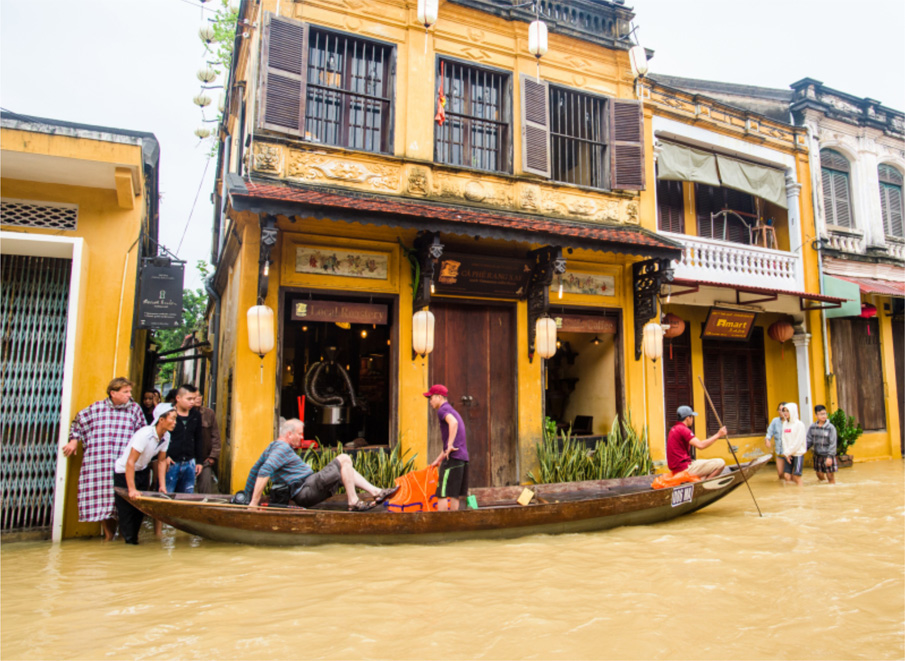Vol 39-Monthly Disaster Review and Outlook

MONTHLY DISASTER REVIEW AND OUTLOOK
MAY 2018 | DISASTER MONITORING & ANALYSIS
(DMA) UNIT, AHA CENTRE
GENERAL OVERVIEW OF MAY 2018
Hydro-meteorological hazards continued to form a majority of disasters within the ASEAN region during May 2018. Using yearly data comparisons, it is evidenced that the ASEAN region experienced twice as many disasters when compared to the same time period last year. Data for the initial three weeks of the period showed low numbers of recorded disasters. However, numbers increased significantly as Tropical Depression 5 developed and moved across Sulu Sea and into the South China Sea. This situation resulted in flooding, storm surges and strong wind events across Indonesia, the Philippines, Malaysia, Brunei Darussalam and Viet Nam. Monsoon season has begun in areas within proximity of the Indian Ocean, which creates increased flood risks for northern Myanmar along the Irrawaddy basin. This is consistent with ASEAN Specialised Meteorological Centre’s (ASMC) observation of the end of the dry season on the 16th of May, marked by an increase in shower activities across the northern part of the ASEAN region.
There were 37 moderate earthquakes with magnitudes of > M .4.0 felt in Indonesia and the Philippines, which were observed at around II to IV MMI. Despite the magnitude of such events, no casualties or damage was reported as a result of earthquakes in both countries. As of the end of May, the alert status for volcanoes in Indonesia are as follows – Warning Alert (Awas, the highest of 4 levels) for Mount Sinabung in North Sumatra; Watch Alert (Siaga, second highest) for Mount Agung in Bali; and Cautionary Alert (Waspada, a level 3 alert) for 19 other volcanoes across the nation. Despite its Cautionary alert level, Mount Merapi in Central Java, Indonesia, has experienced significant increased activity recorded on the mountain, with phreatic eruptions and release of volcanic ash columns beginning on the 21st of May. Three eruptions at the end of Week 22 (1st of June 2018) forced two airports in Central Java to temporarily shut down their operations as a result of the ash plume.
OUTLOOK FOR JUNE-JULY 2018
According to the ASMC, wet weather conditions are expected over the northern parts of the ASEAN region for the rest June, with more shower activities forecast as the transition to the Southwest Monsoon is expected to begin during the month. Rainfall can be expected to increase during this time due to the presence of the monsoonal rain band across the north of the ASEAN region. The Southwest Monsoon season typically prevails over the region between June and October, and is associated with the traditional dry season in southern parts of ASEAN contrasting with the wet season in northern parts of the ASEAN region.
In stark contrast to the northern ASEAN region, extended periods of dry weather can be expected during June and July in the southern reaches of ASEAN. This may lead to an escalation of hotspot activities, with smoke plumes should ignition occur, particularly in parts of Sumatra and Kalimantan. Slightly below-normal to near-normal rainfall may still occur over most parts of the region during this period, with below-normal to slightly below-normal rainfall expected for Java, Nusa Tenggara and Timor Leste during the early part of the Southwest Monsoon season.
As always, you should keep posted on weather updates from your respective Meteorological Services and Disaster Management Organisations for evacuation notices (if any). You can refer to our social media for links to the respective national agencies and organisations for further information.
Written by : Mizan Bisri, Qing Yuan Pang
DISCLAIMER
AHA Centre’s estimation is based on data and information shared by National Disaster Management Organisations (NDMOs) and other relevant agencies from ASEAN Member States, international organisations and news agencies. Further information on each recorded-significant disaster, description and details of data and information are available at: http://adinet.ahacentre.org/reports.
- Published in Monthly Disaster Outlook






